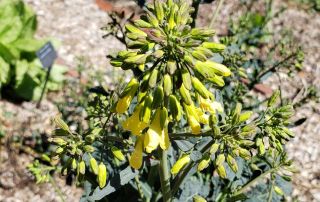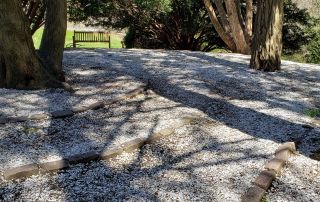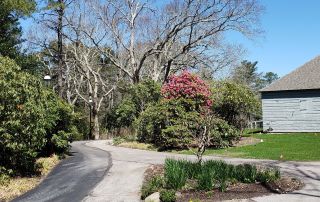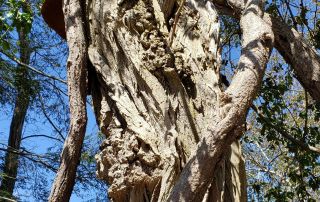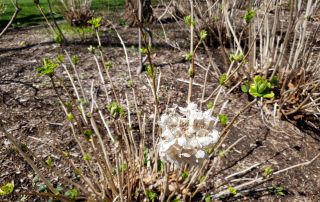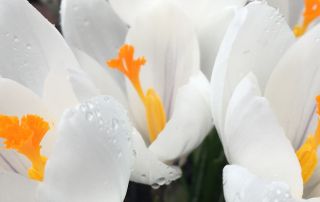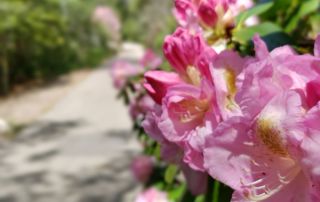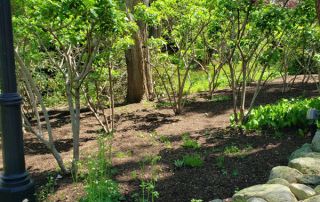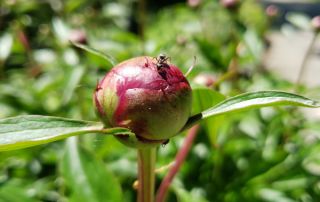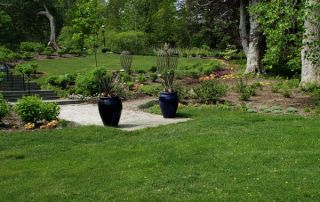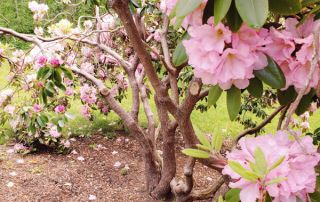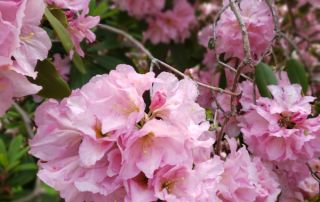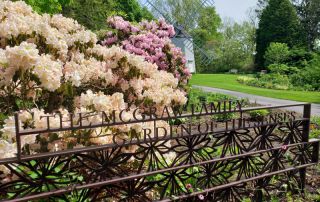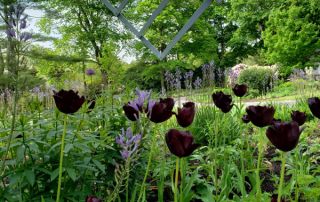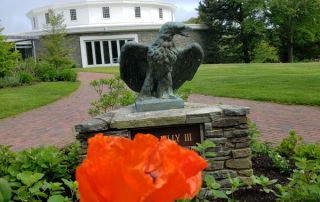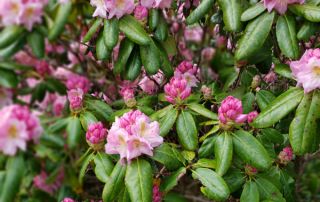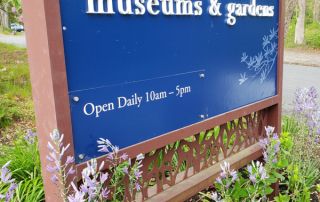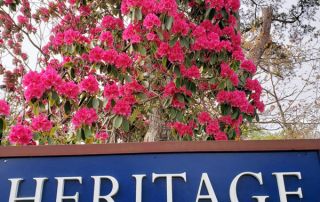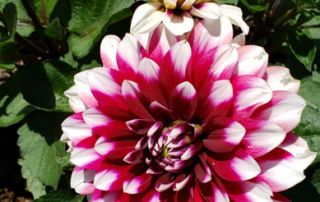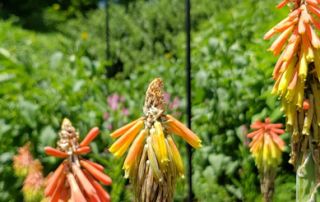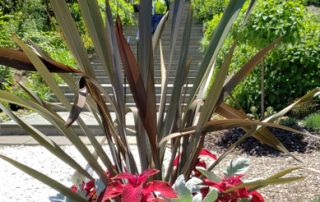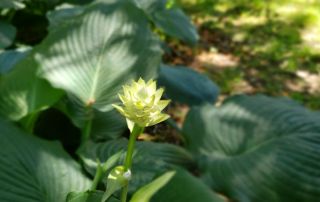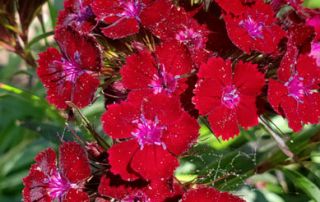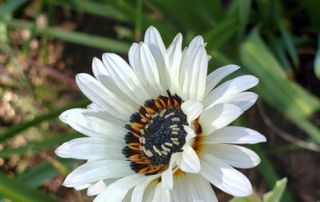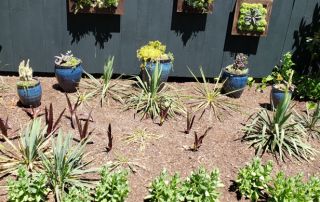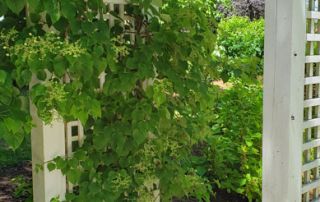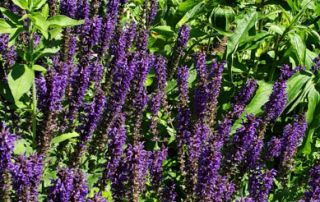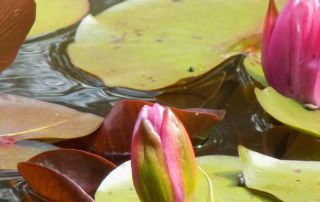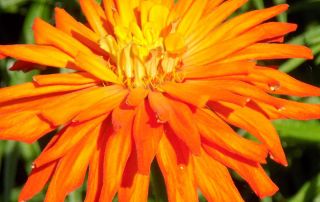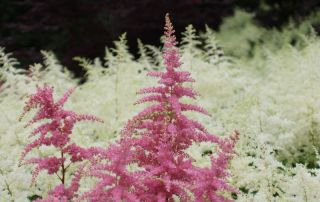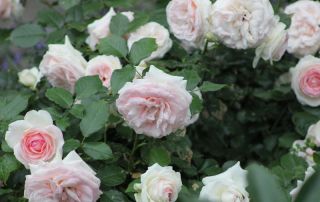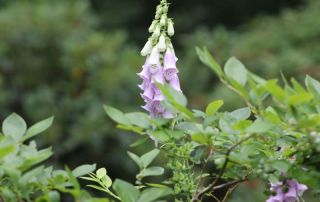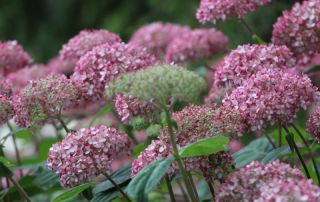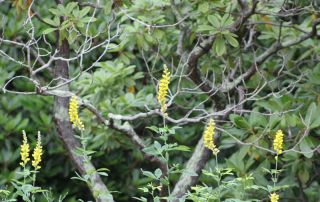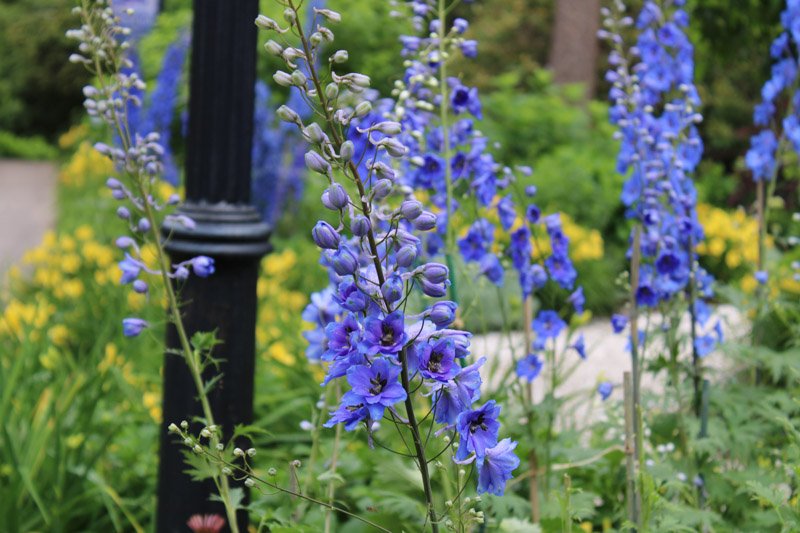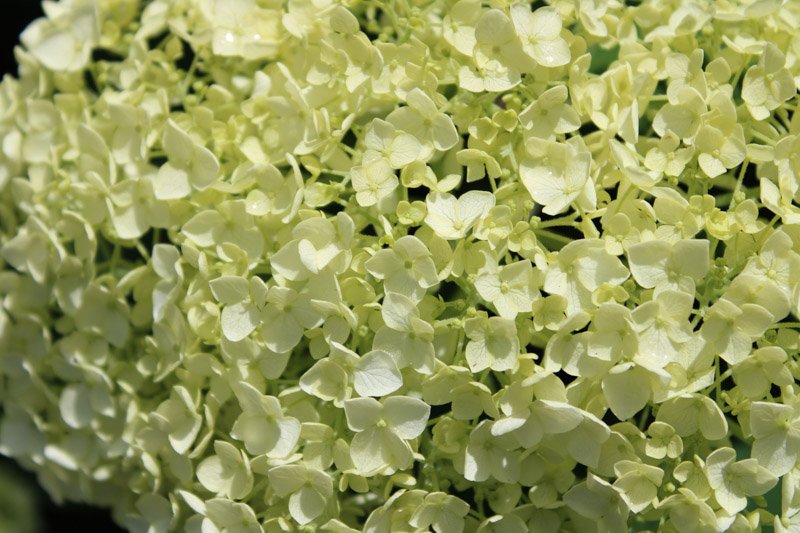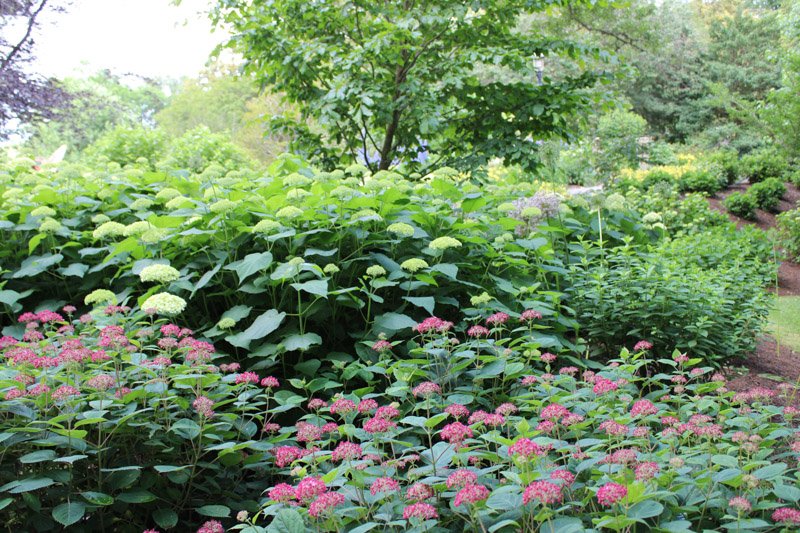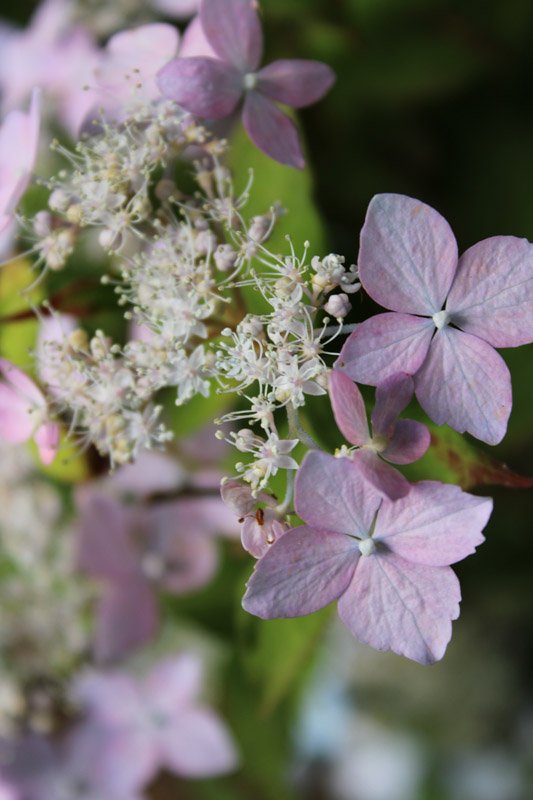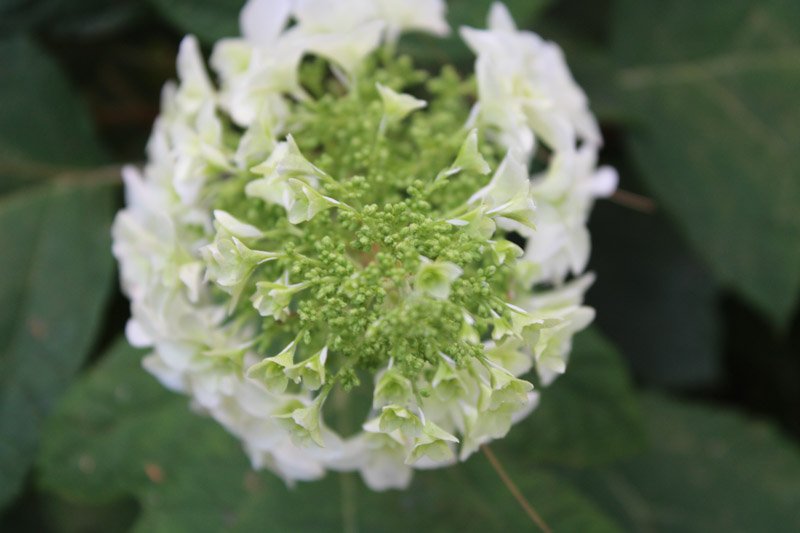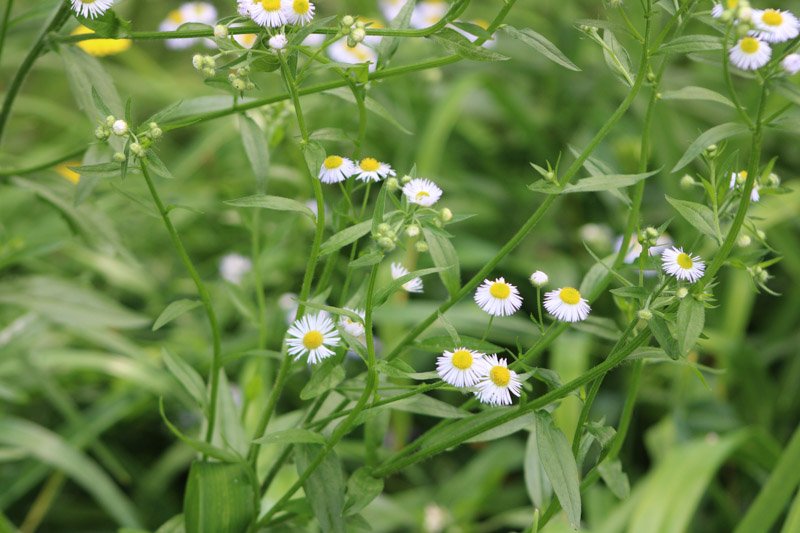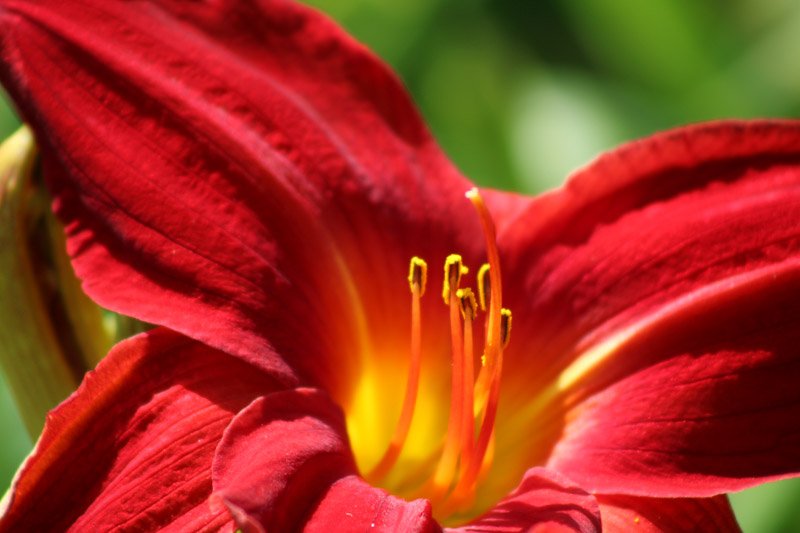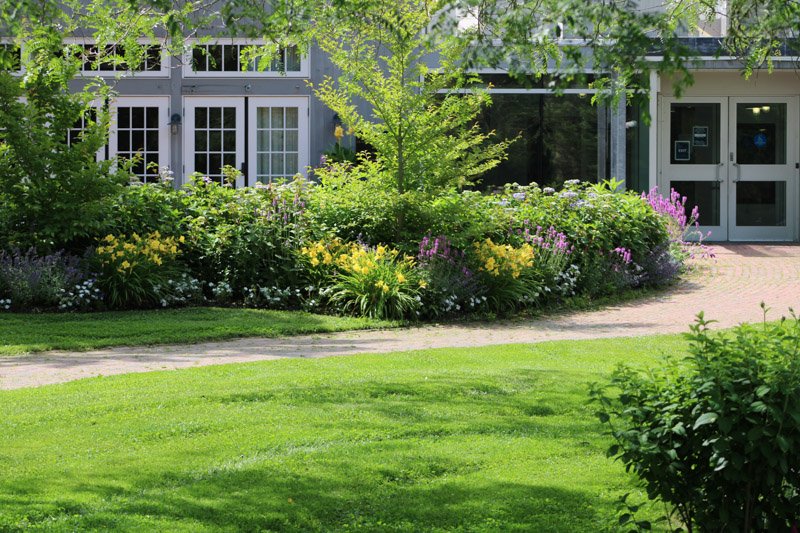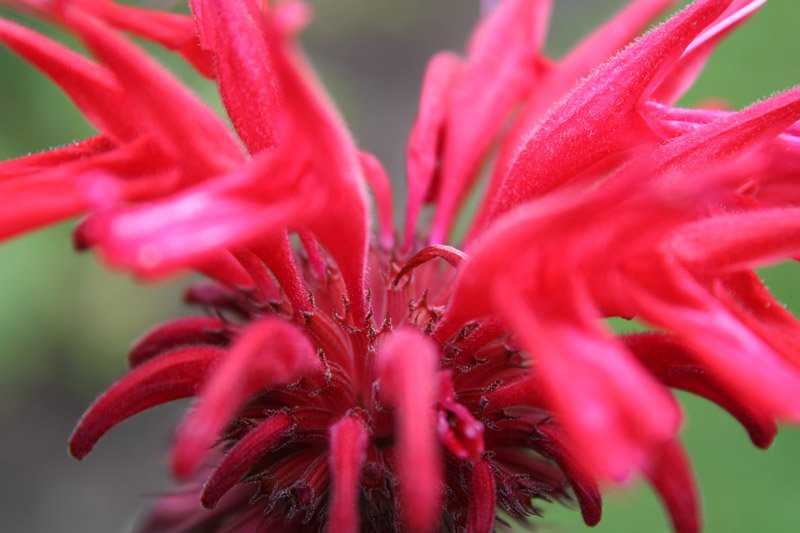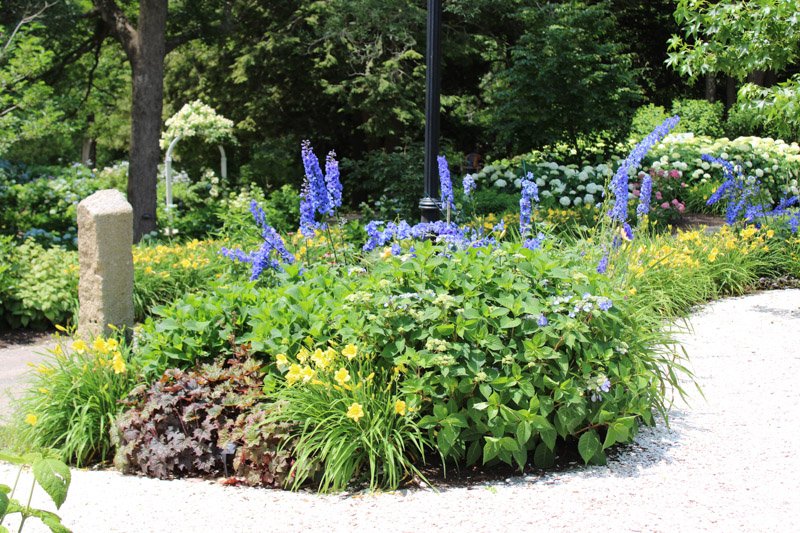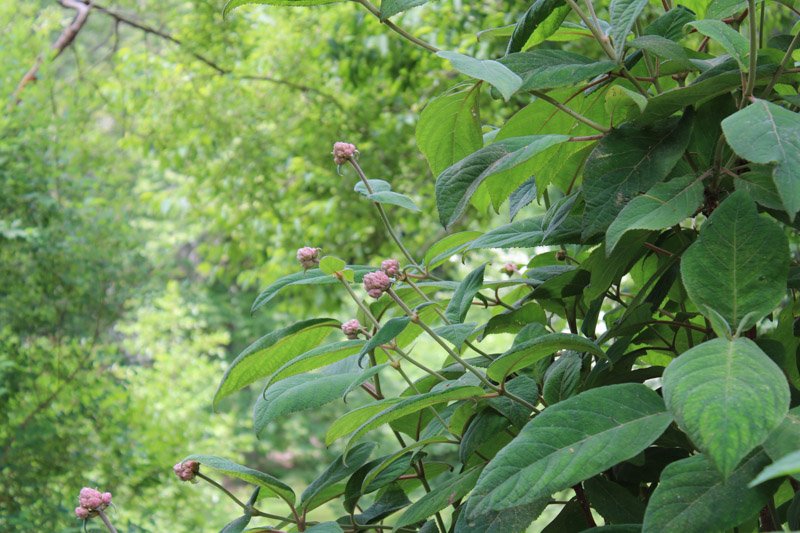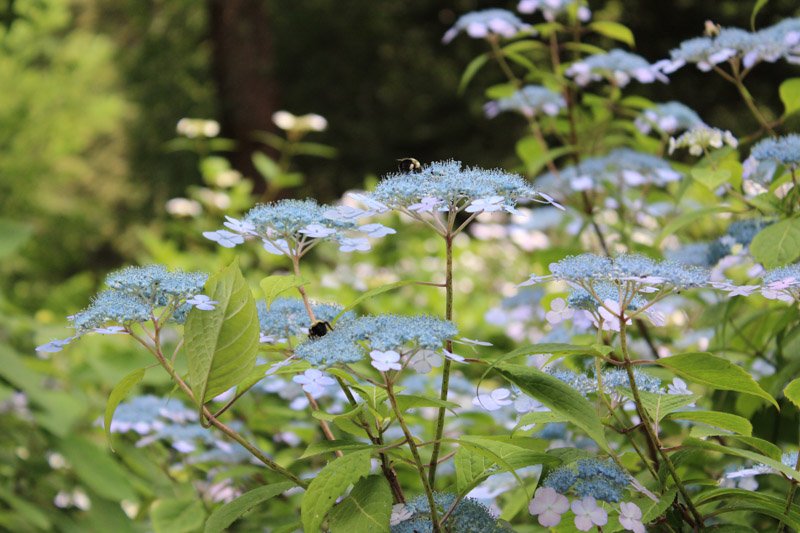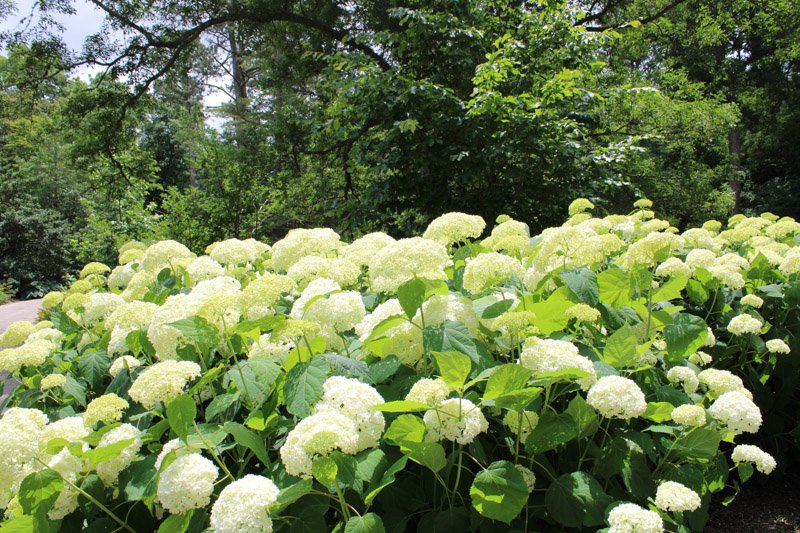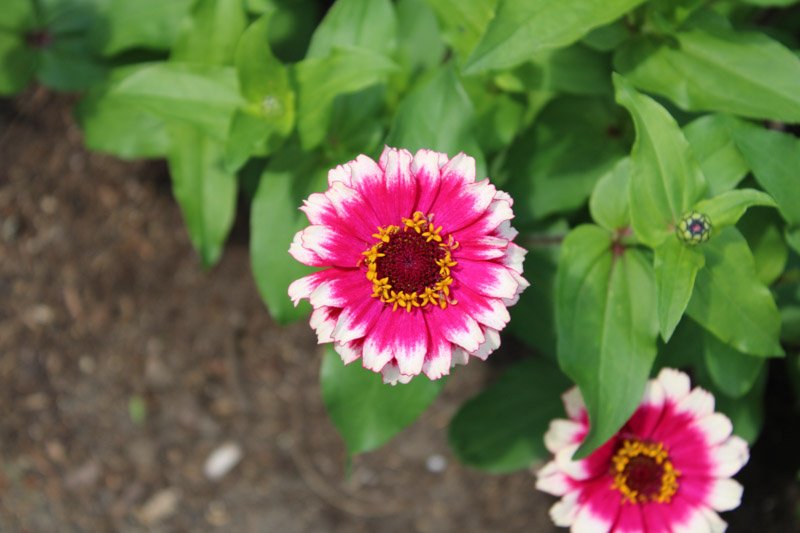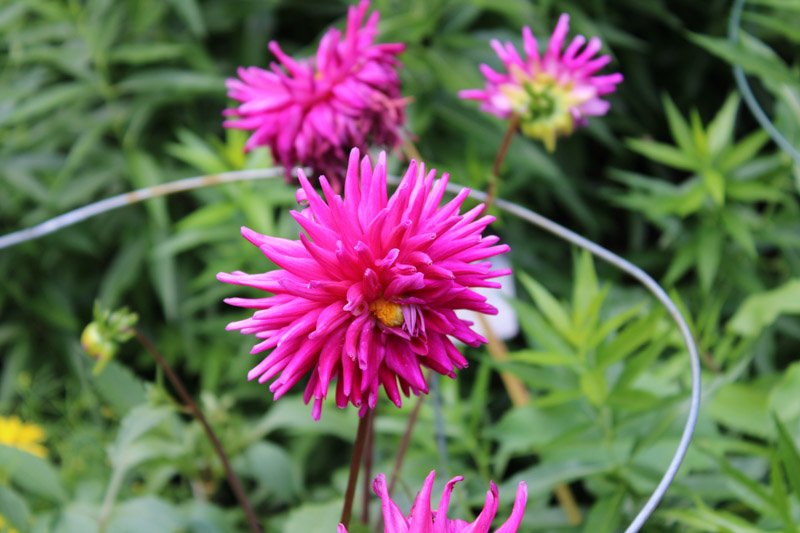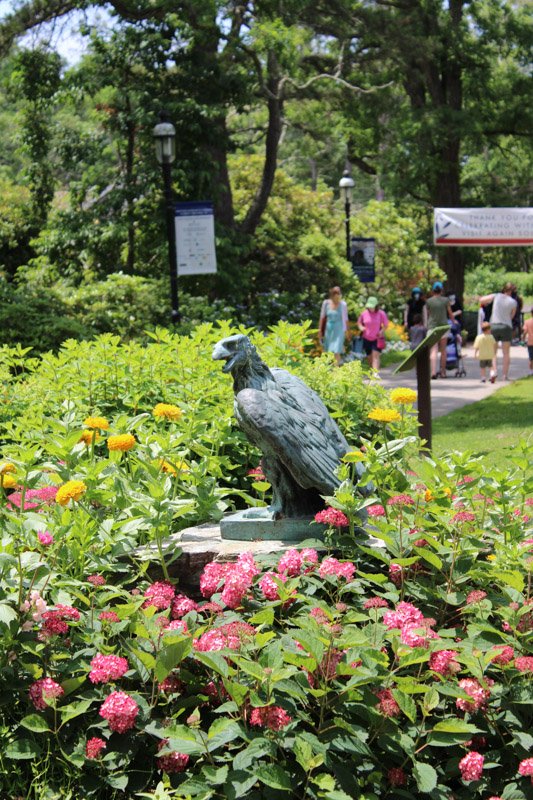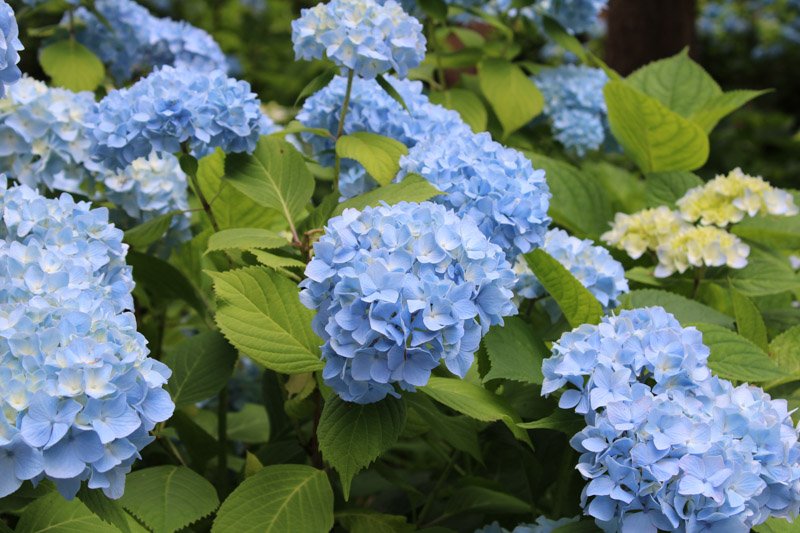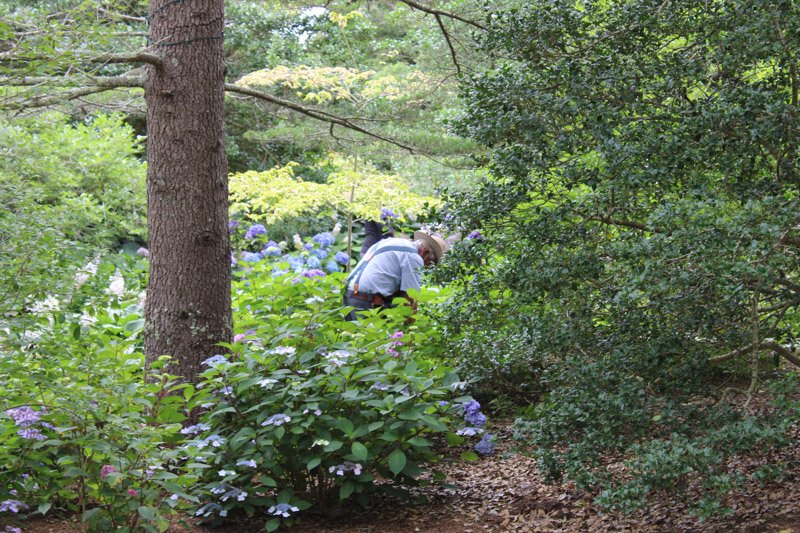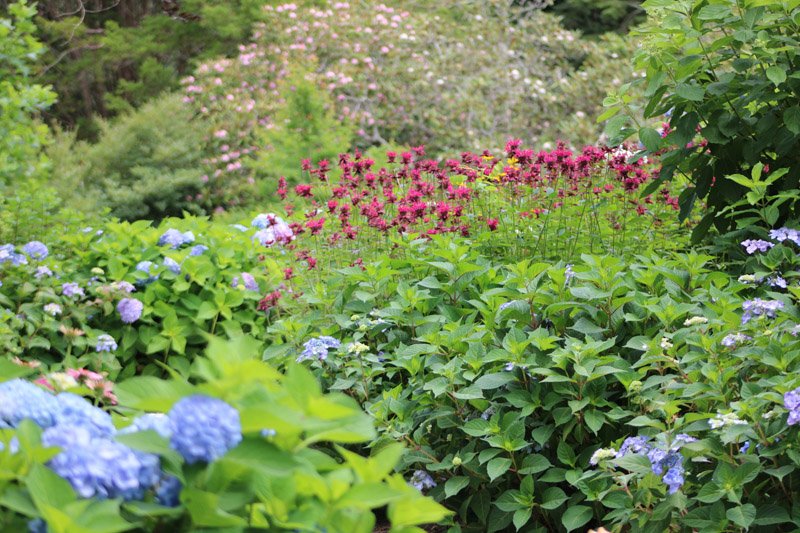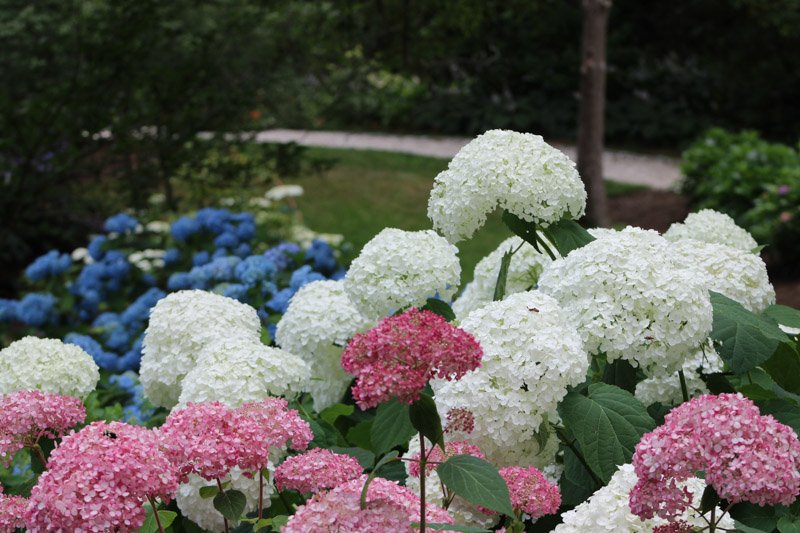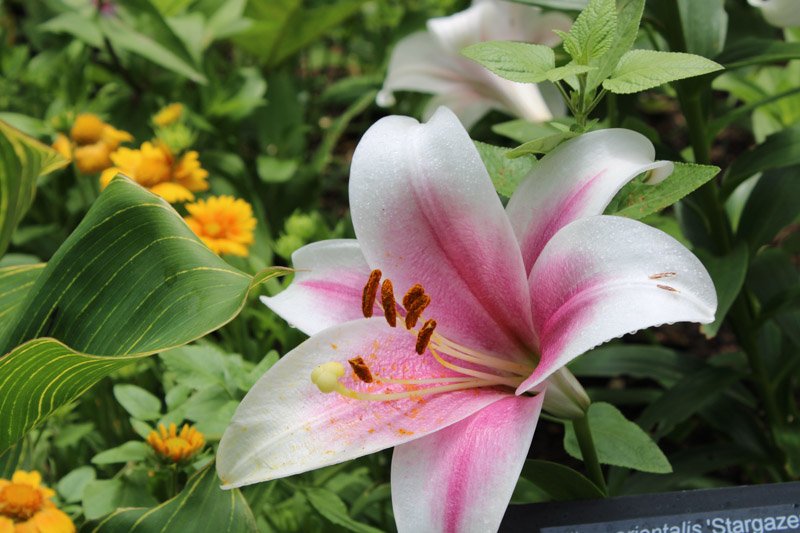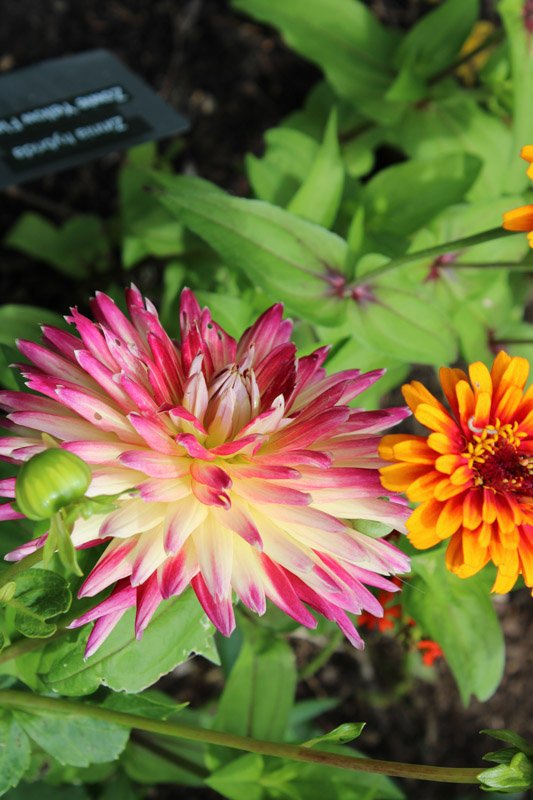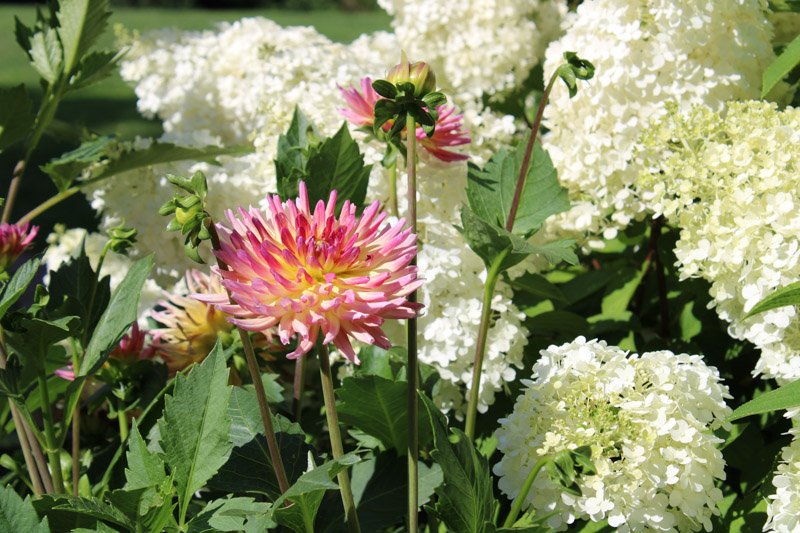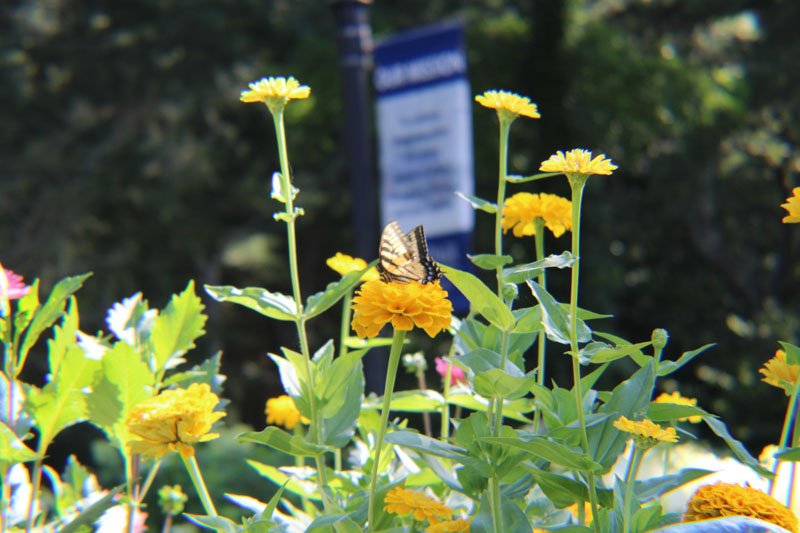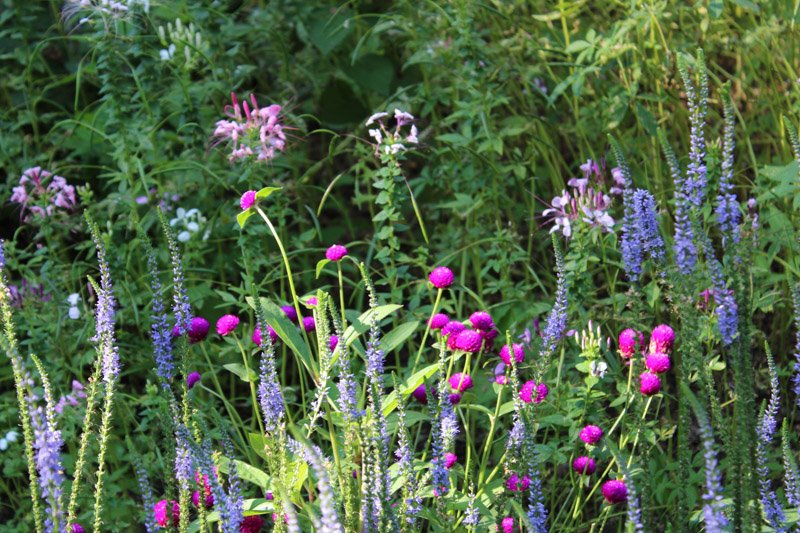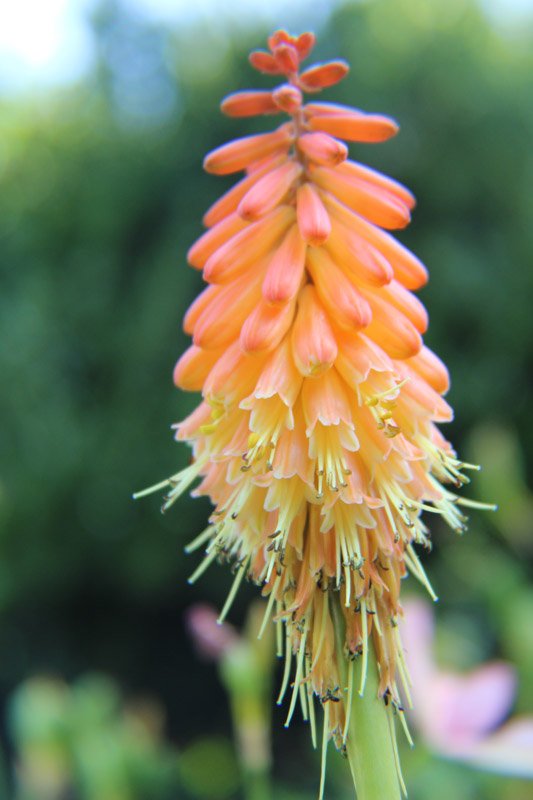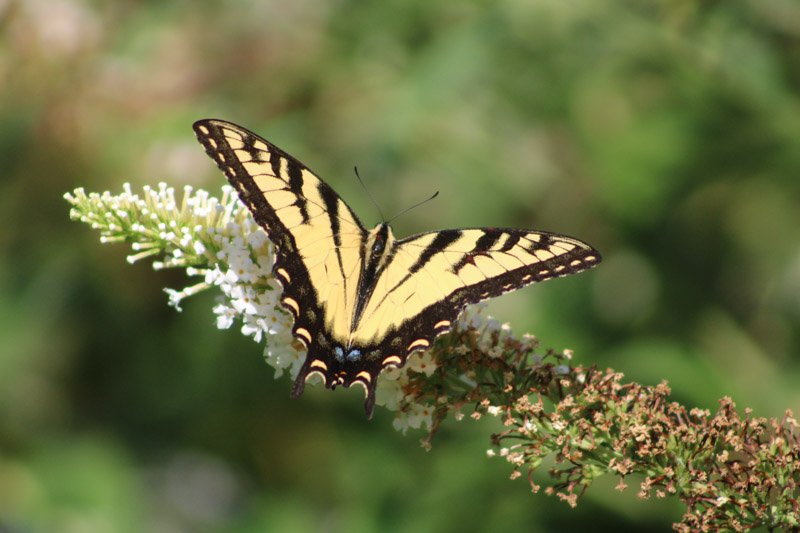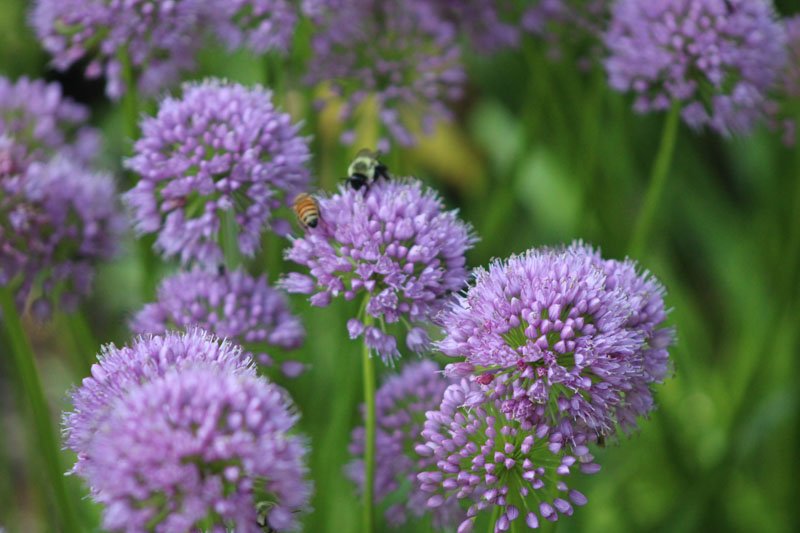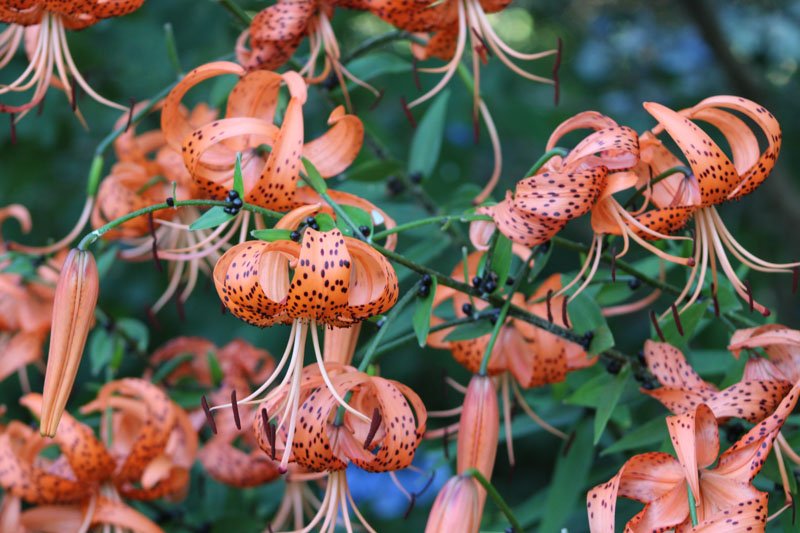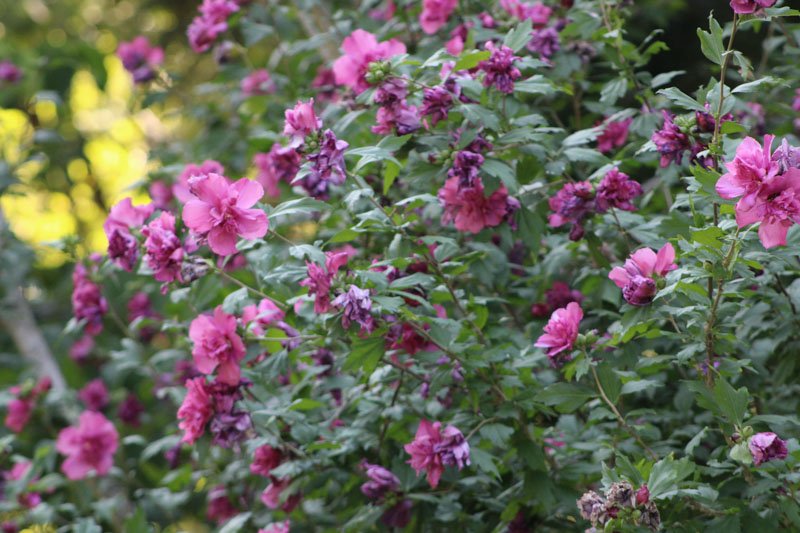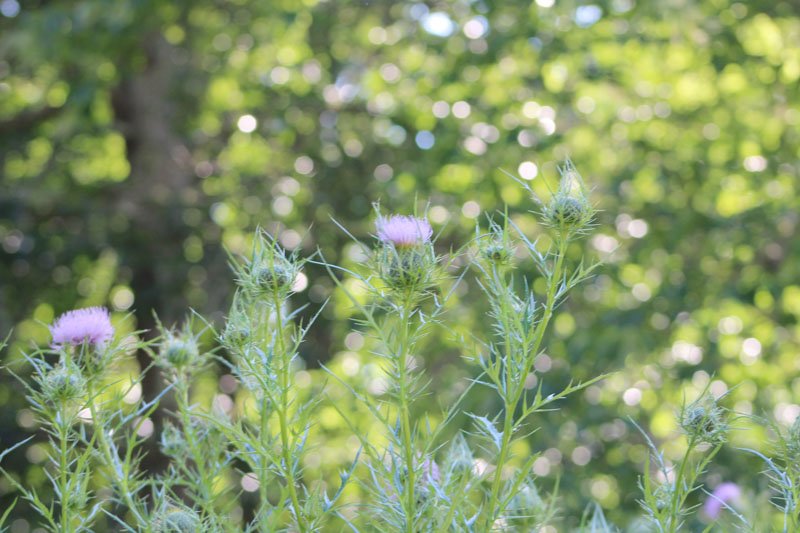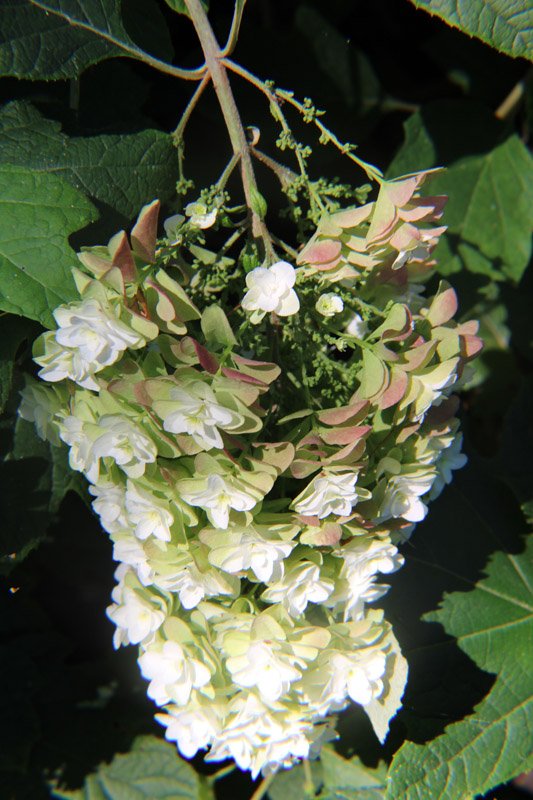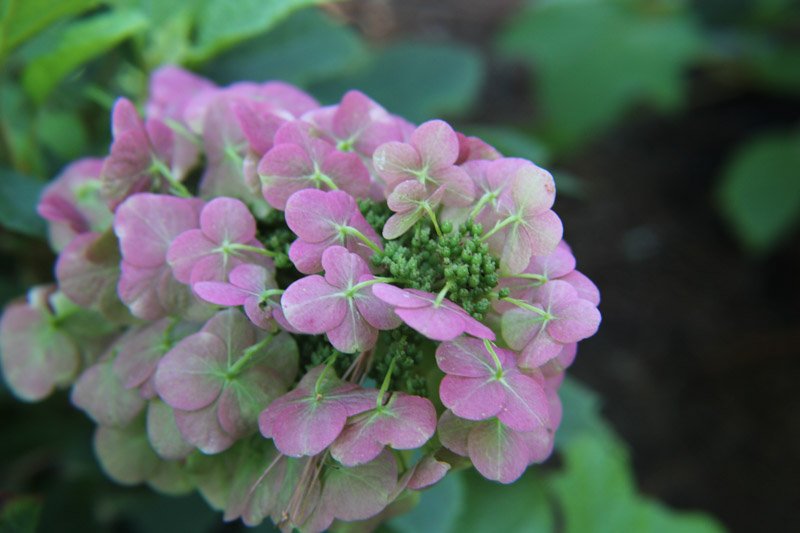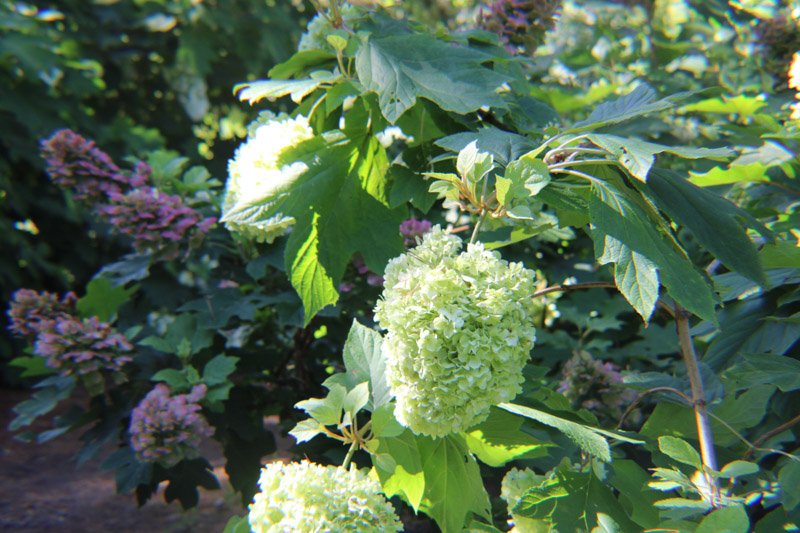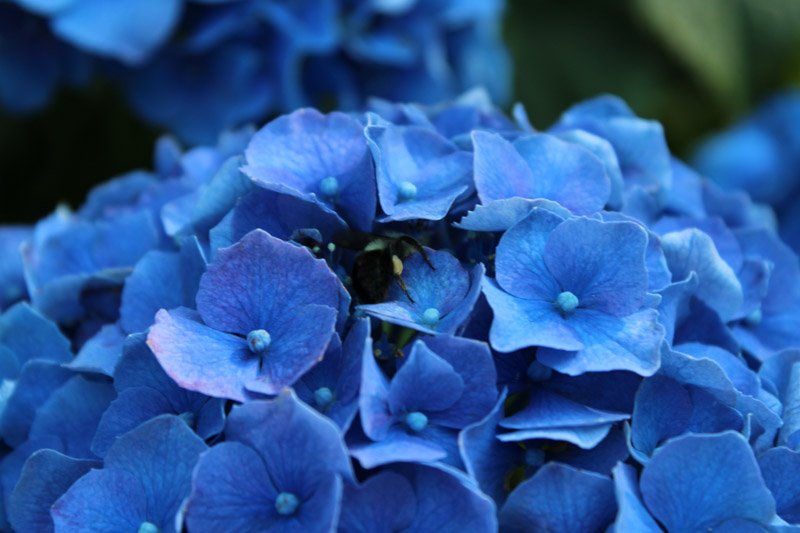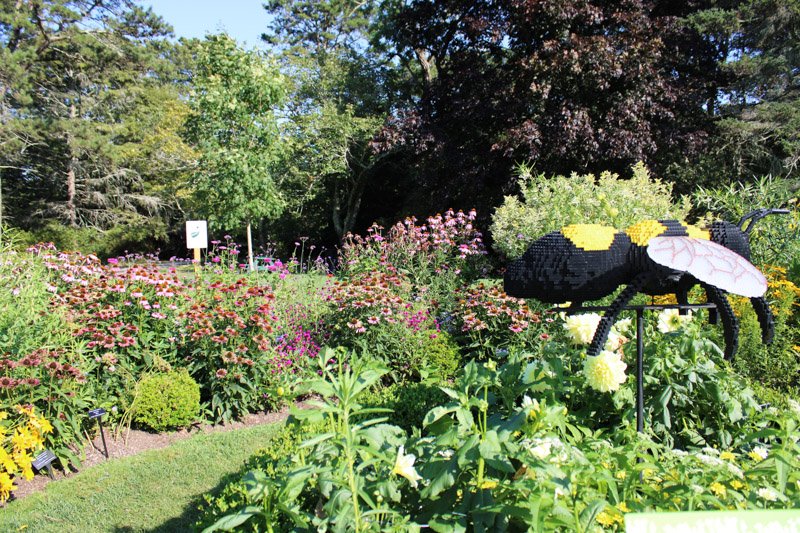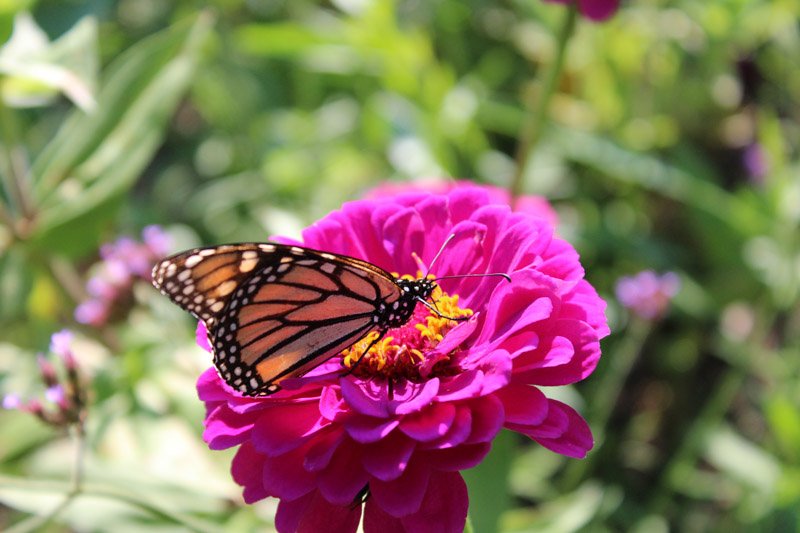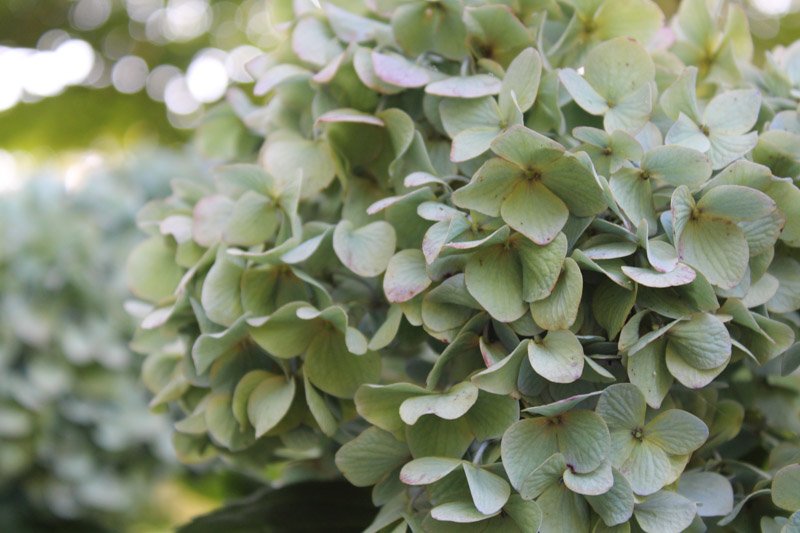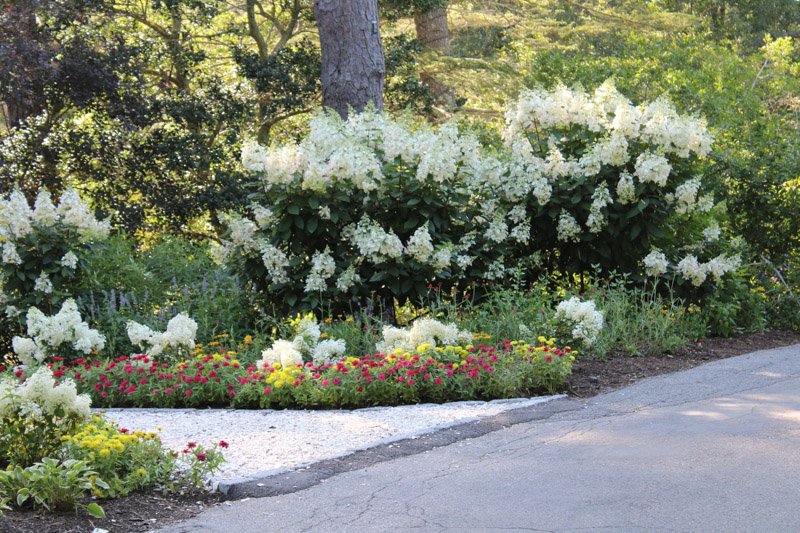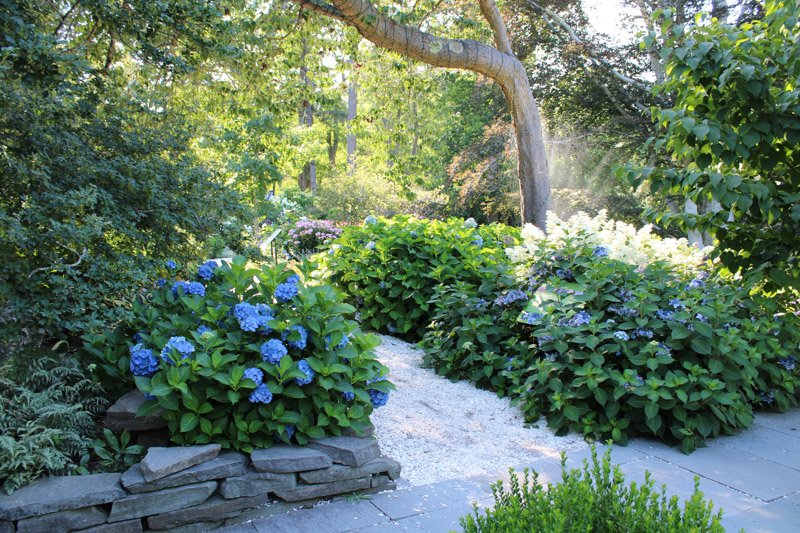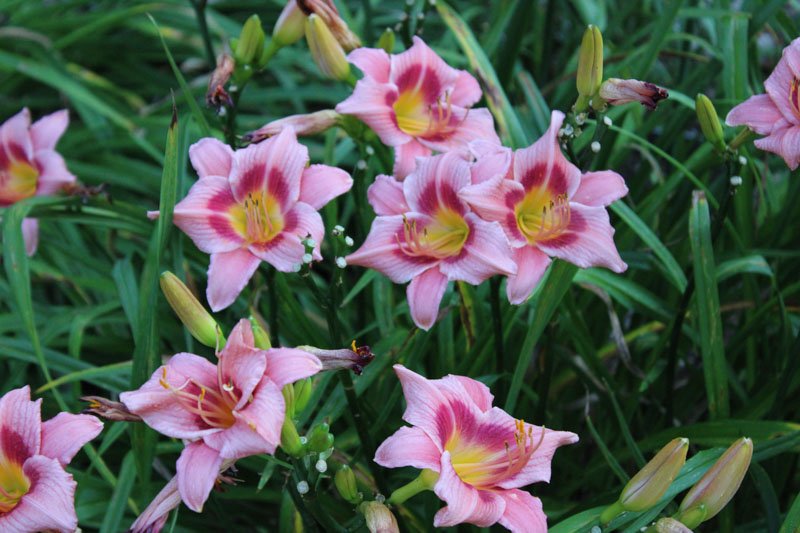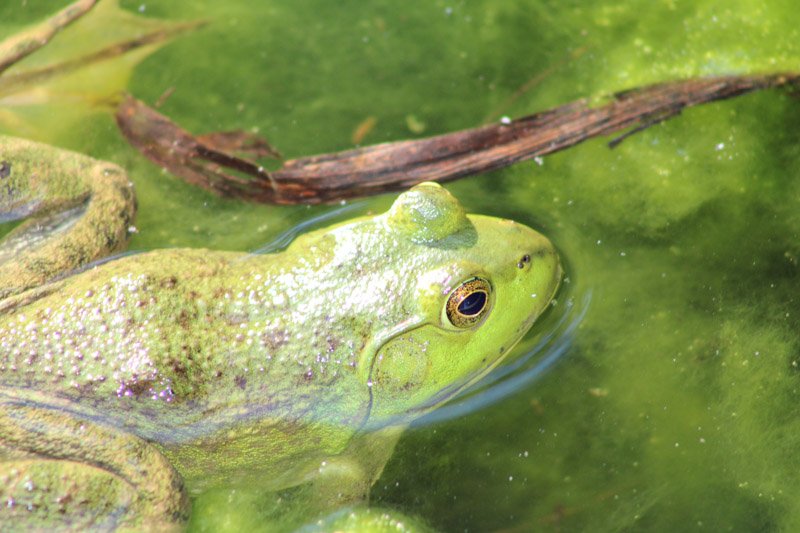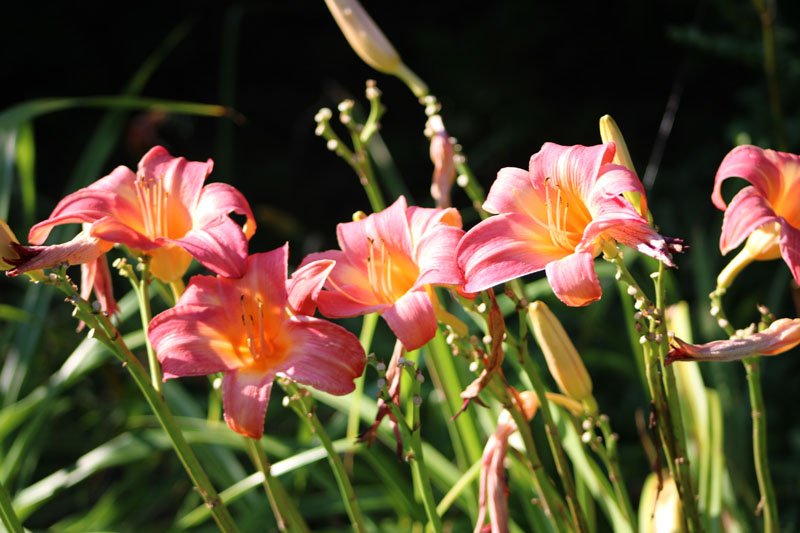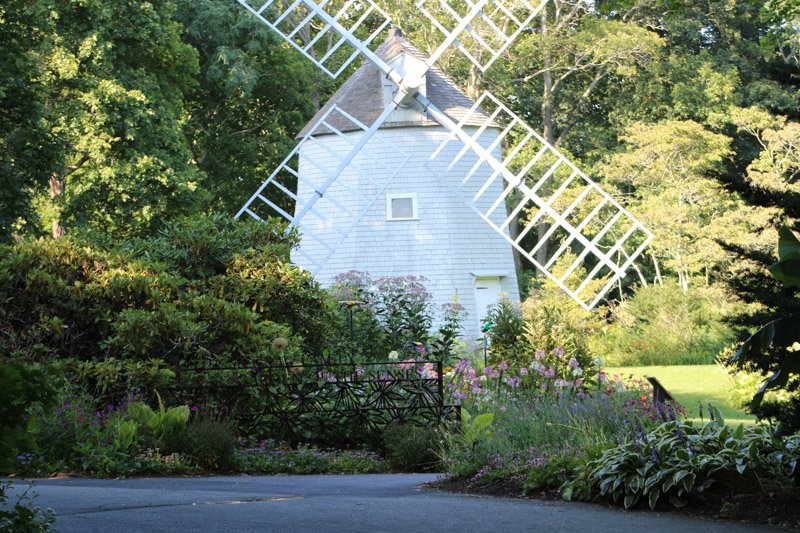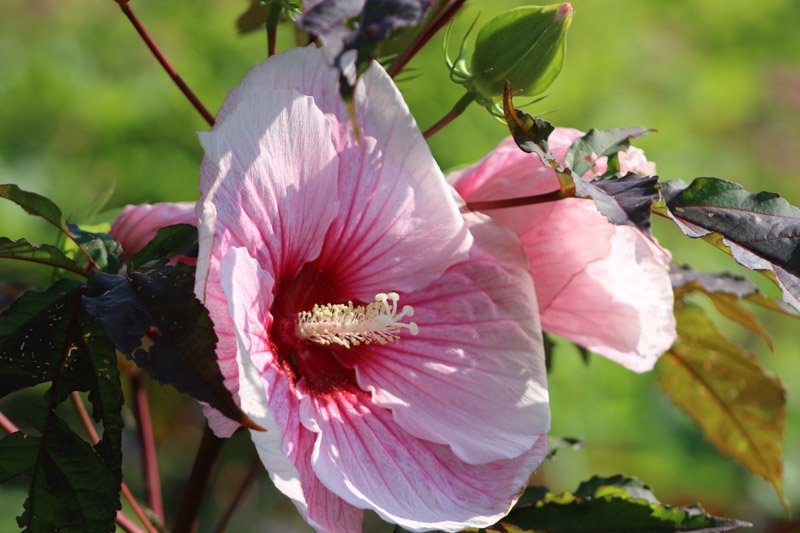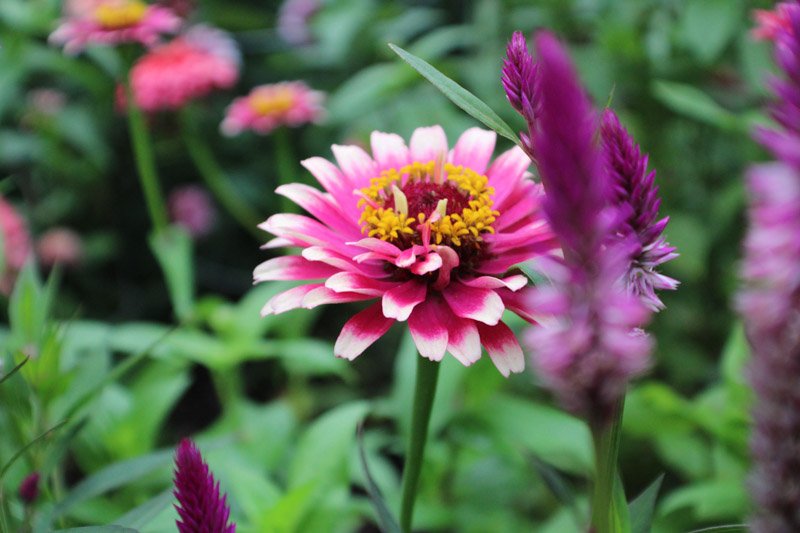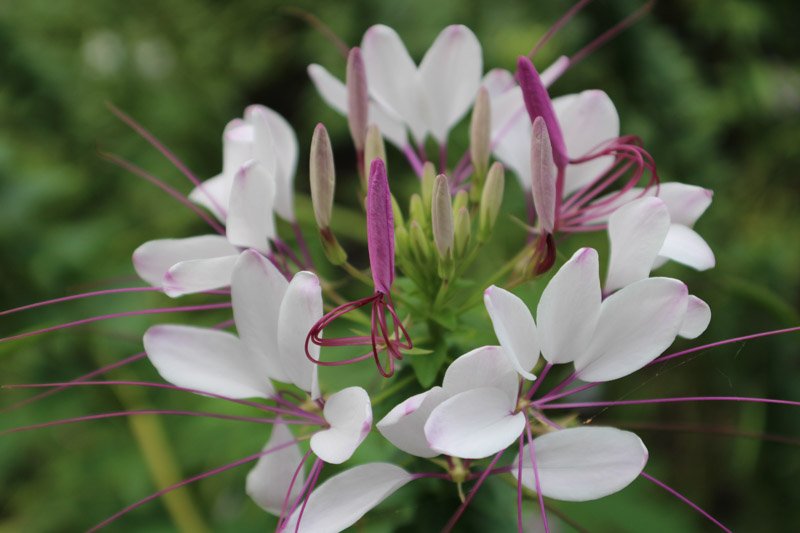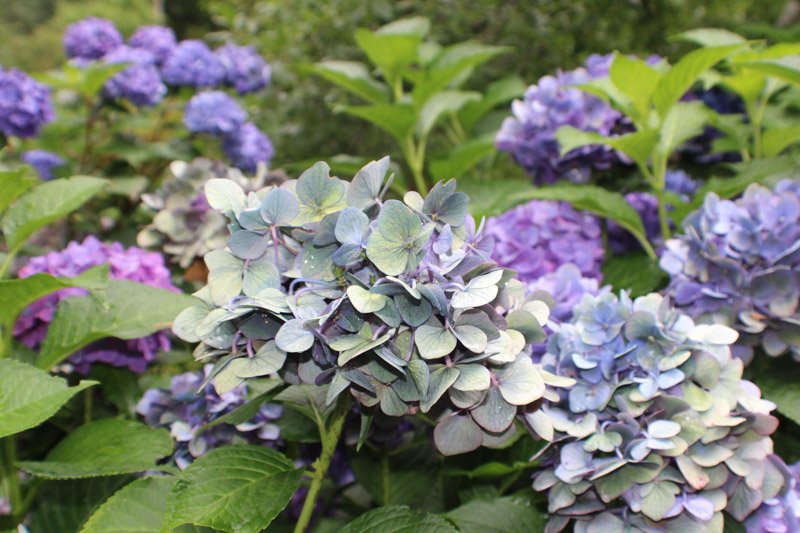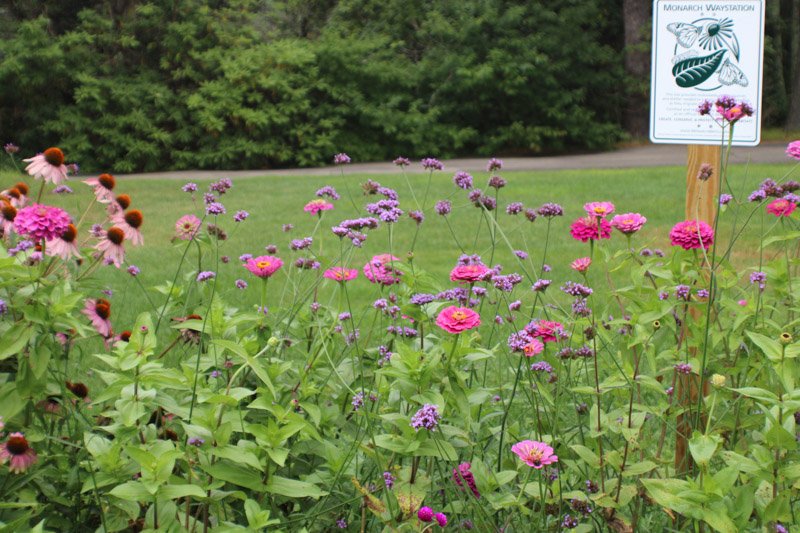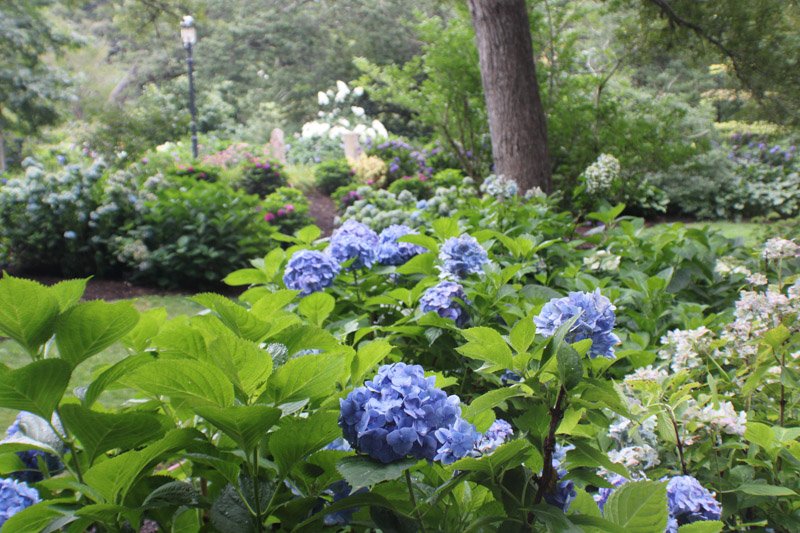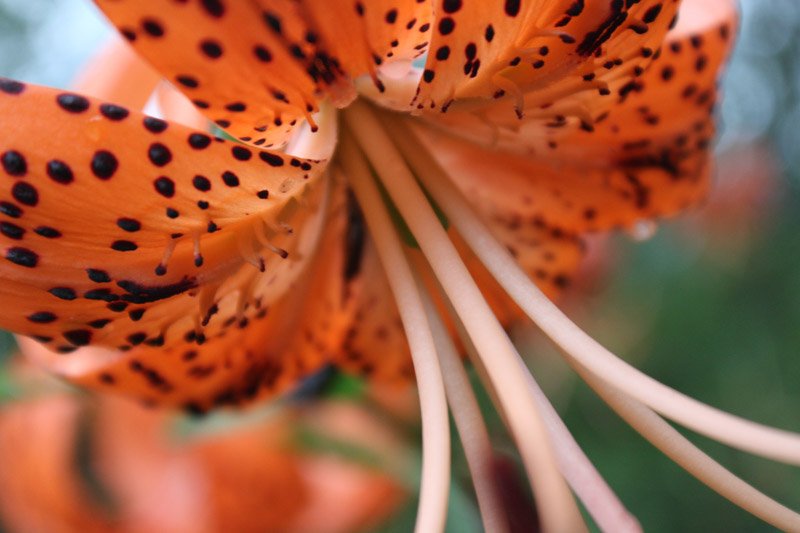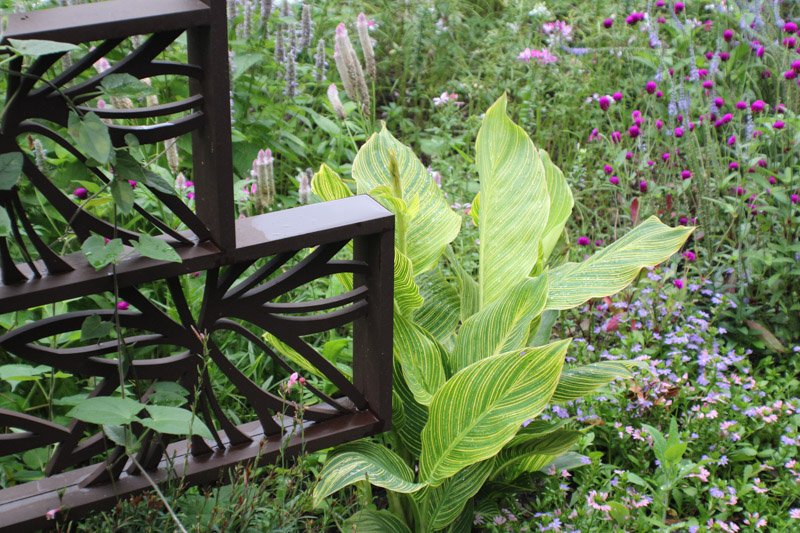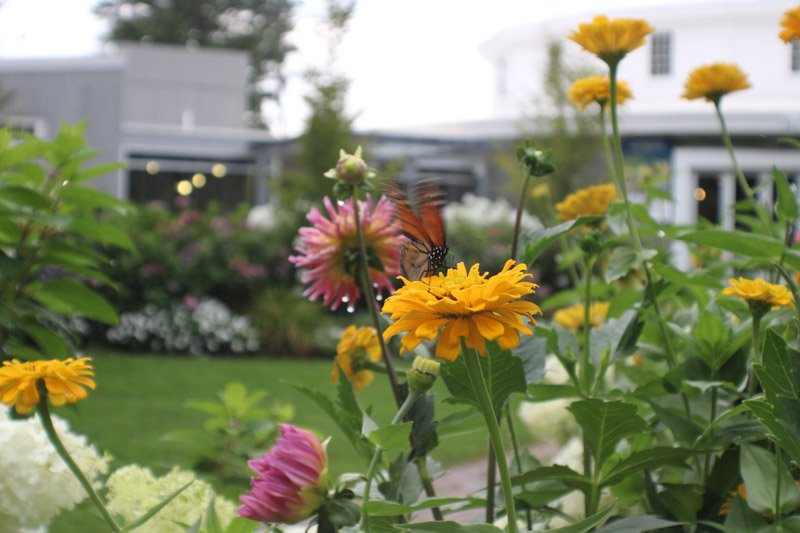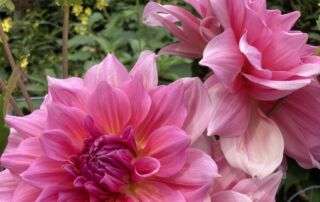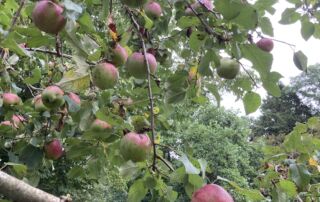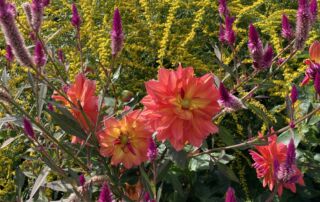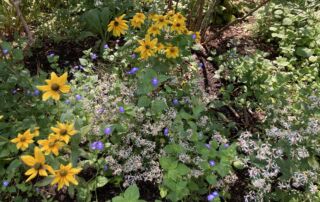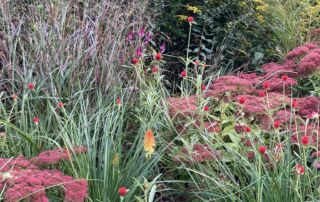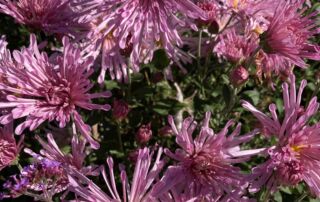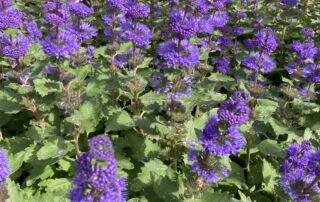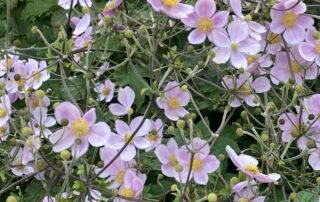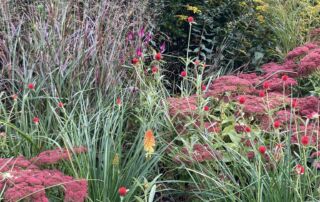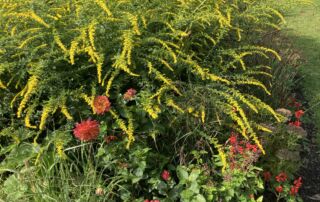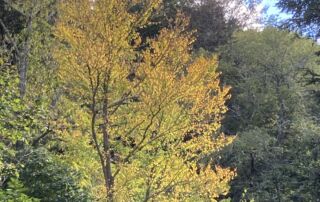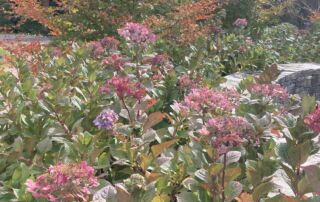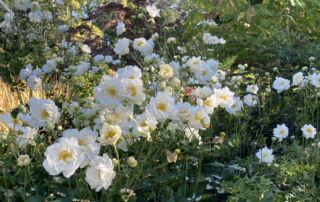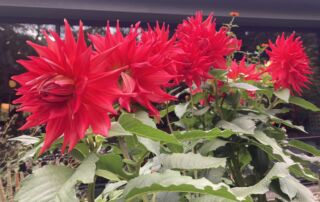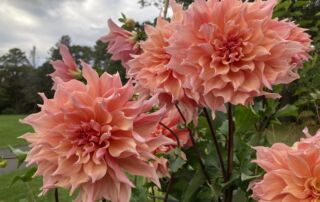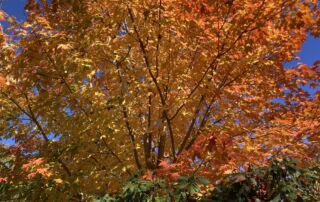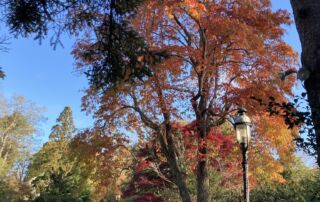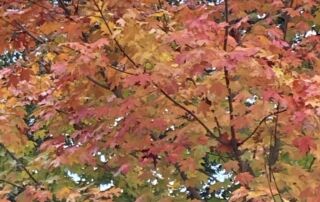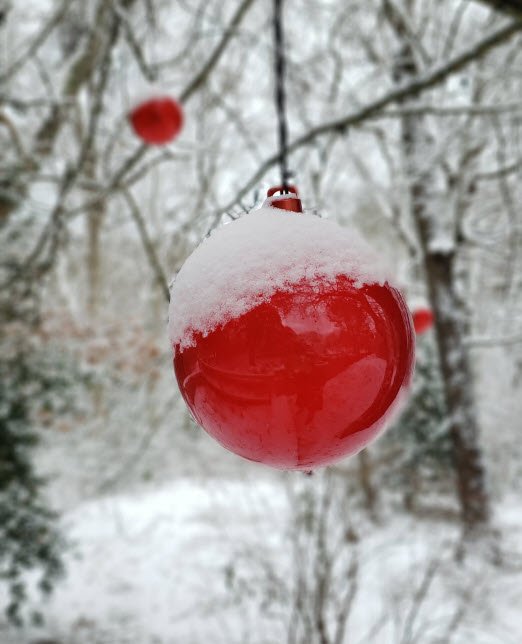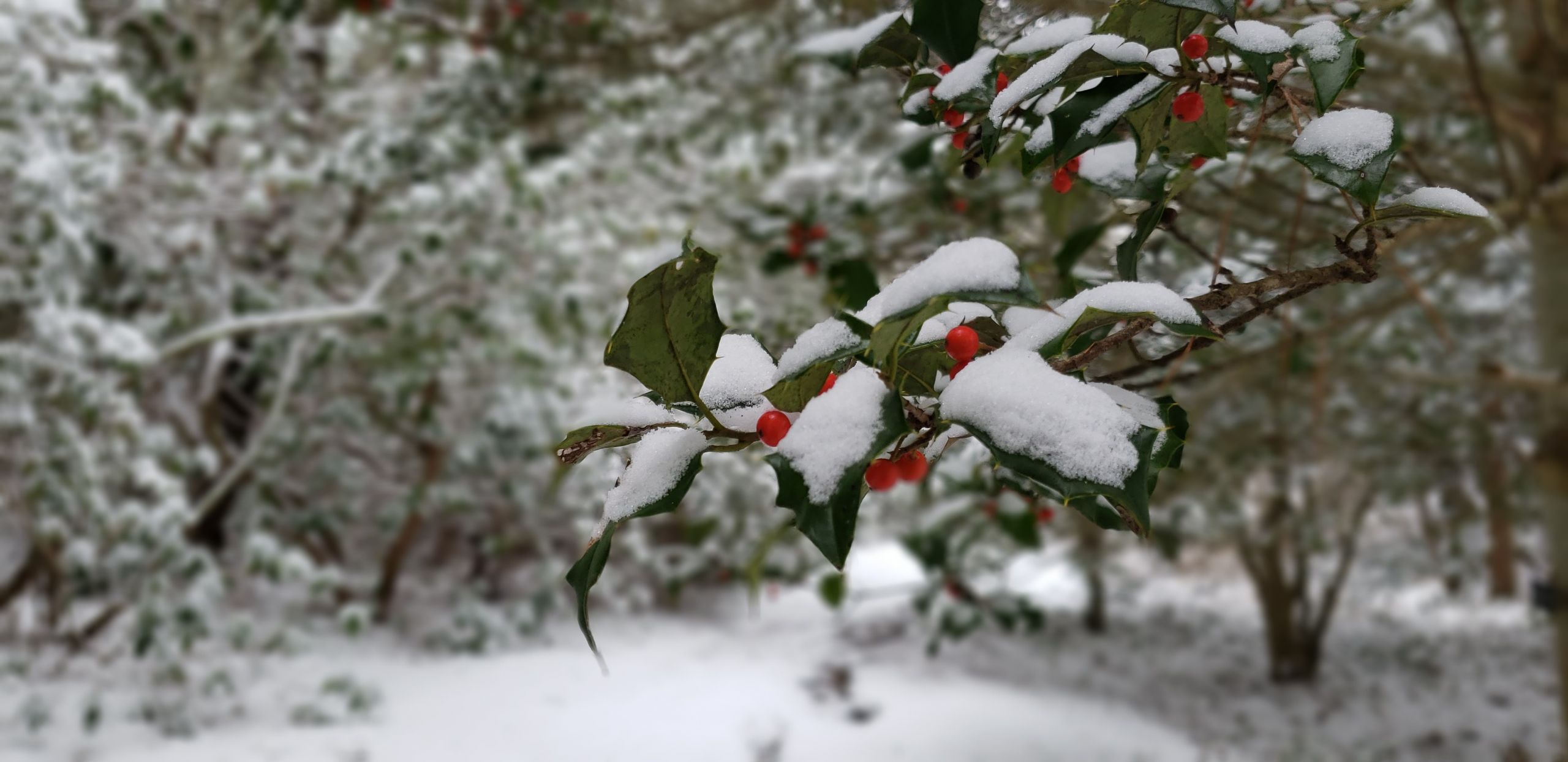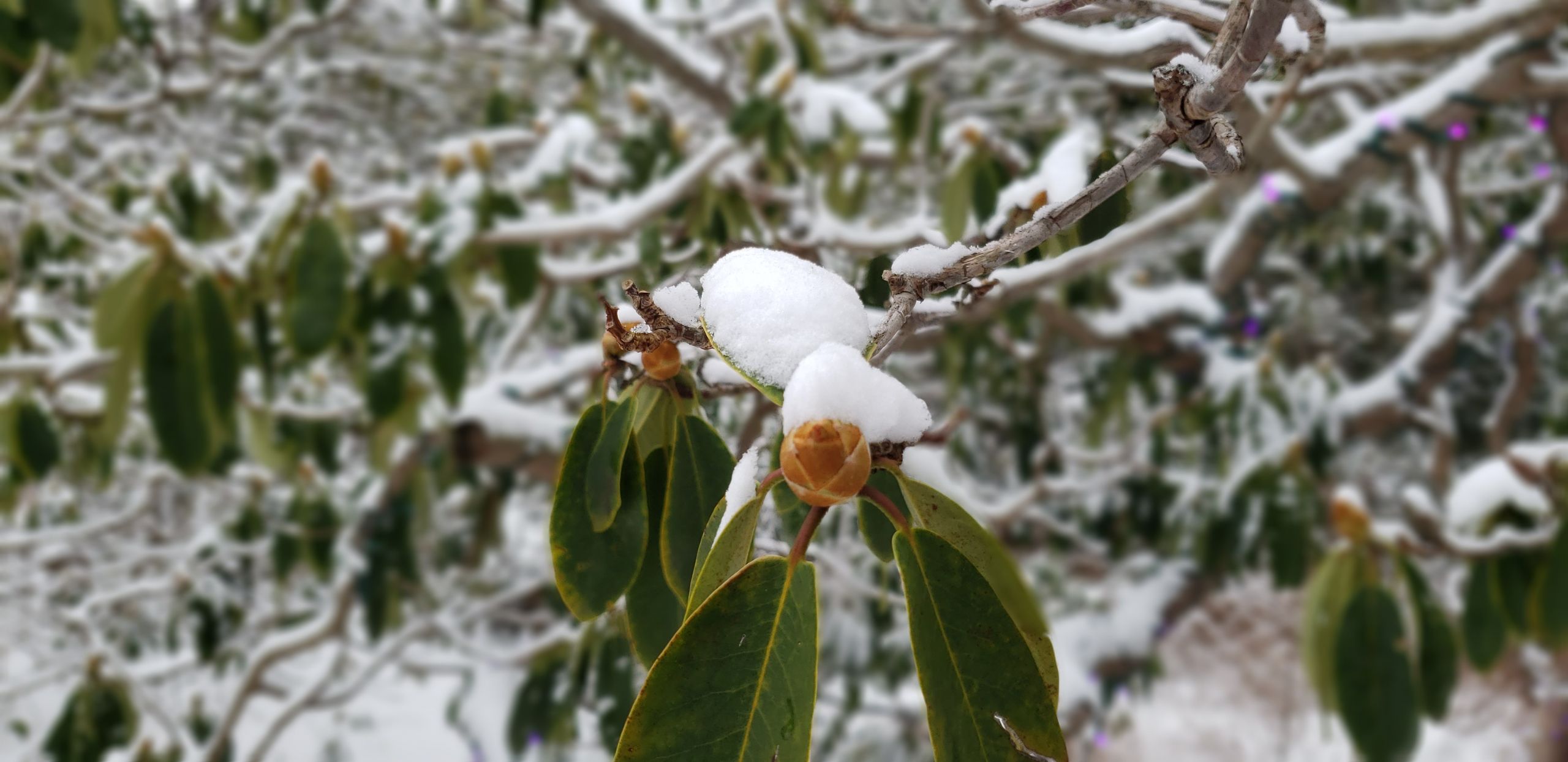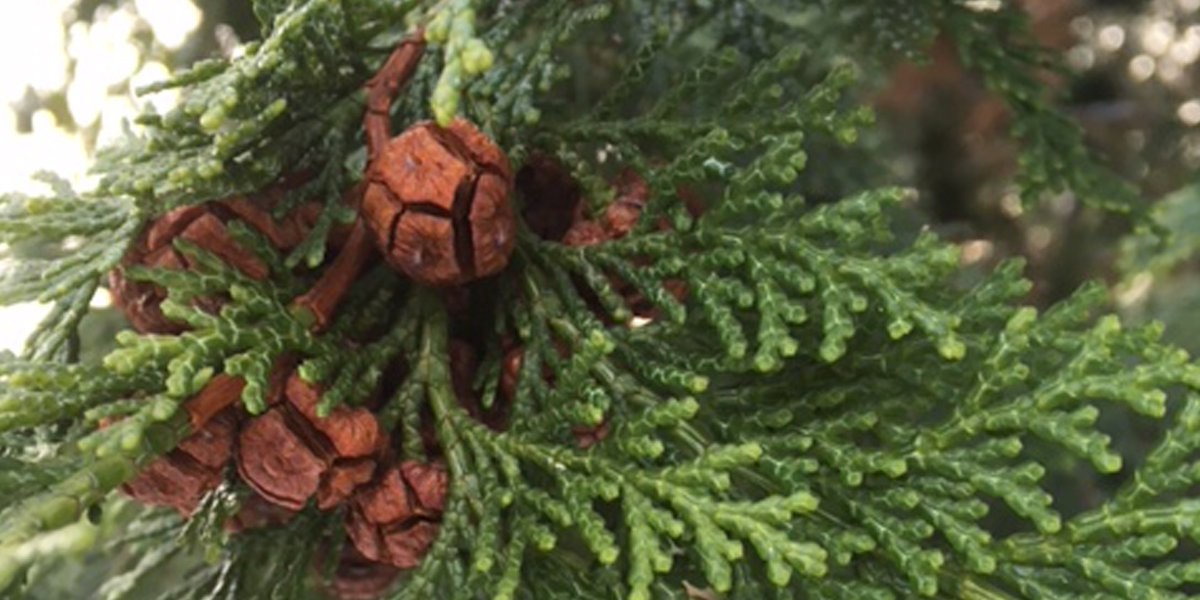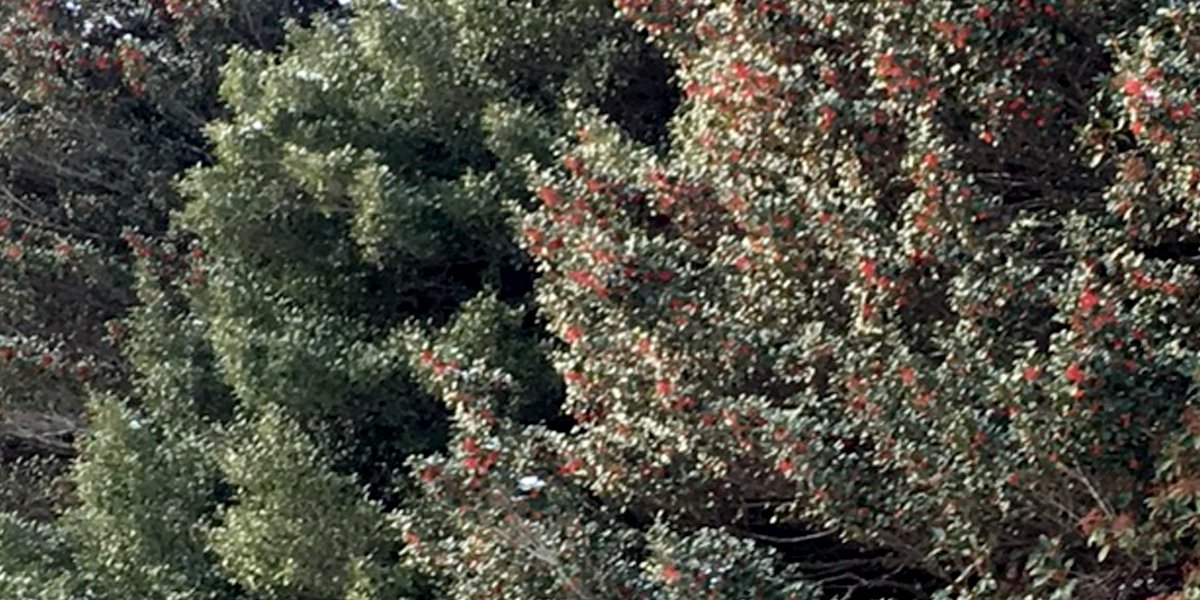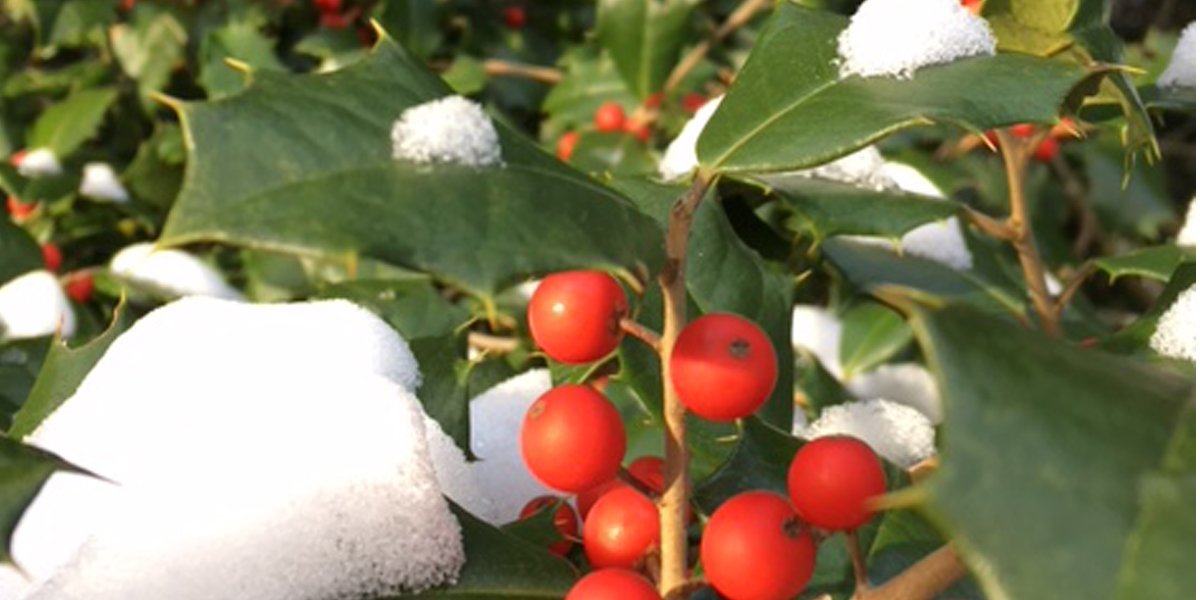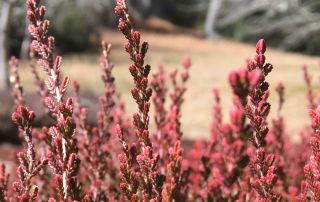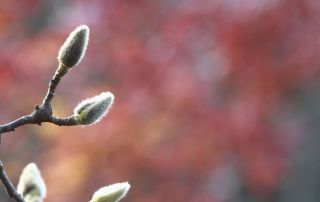APRIL
Spring has sprung
The first signs of spring emerge with crocuses and daffodils, and we plant cheerful pansies at the entrance. Star magnolias, pieris and cherries begin to bloom, and the heathers are still in bloom in the Arbor Bowl. Red stems of peonies begin to reach towards the sun and unfurl, and if you’re lucky, Imperial fritillaries might be blooming up at the Carousel.
MAY
The daffodils are in their glory, as well as splashes of blues from lungwort, Siberian bugloss and VA bluebells, while above are the lovely flowers of magnolias, cherries and spicebush. By mid-May, starry blue camas lilies enchant among tulips and, while apple, crabapple, redbud, flowering dogwood trees, lilacs, epimedium, flowering quince, and cheerful yellow waldsteinia may be in flower. By the end of May oriental poppies burst forth huge crimson petals, azaleas begin to bloom, Carolina Silverbell trees near the Wing building overflow with delicate bell-shaped flowers and snowball viburnums bloom in the herb garden. Then on to the maze to catch the wisteria in flower, and the adventurous may continue down to the lower events field to see lupines in bloom.
Usually, the last weeks of May and early June is the peak of the rhododendron festival, where you can wander among towering hundred-year-old rhododendrons bred by Charles Dexter for stunning beauty, abundant flowers, and heady scents. It is a breathtaking experience not to be missed.
JUNE
Gardens are filling in
At the beginning of the month our fringe tree blooms in a shower of white lace, the tulip tree lets you see its golden teacups near the labyrinth, mountain laurel and the rhododendrons on woodland paths are radiant and the azaleas are ablaze. Viburnum and Kousa dogwood add bright spots of white, while the gardens begin to flower with gorgeous peonies, alliums, and more and more colors every week as the season unfolds. Later in the month annuals and herbaceous perennials will begin their show in the McGraw Family Garden of the Senses, the McInnes Garden, and the Carousel, while roses bloom in the herb garden.
JULY
Hydrangeas at their height
All of the gardens are ablaze with abundant color in July with both perennials and annuals. The daylily garden is a feast for the senses with over 800 daylilies in a variety of color, and it’s time for our annual everything Hydrangea Festival, when our nationally significant collections of hydrangeas begin their explosion of blooms in all kinds of shapes and sizes!
AUGUST
Bloom abundance
Many of our flowers reach their peak in August, including our Hydrangea Display Garden and North American Test Garden, the Vegetable Garden, Three Sisters Garden, The McGraw Family Garden of the Senses, Arbor Bowl, and Carousel. There are abundant flowers everywhere! Sunflowers, Joe Pye, liatris, dahlias and the hibiscus family love this month – like Rose of Sharon and hardy hibiscus – and dahlias start to claim the stage.
SEPTEMBER
Last blooms of summer
This is a beautiful month at Heritage. The weather is perfect, the gardens are still in bloom. Hydrangeas often get better with age, transforming into pinks and reds with the antiquing of their petals, and dahlias and asters save their rich colors for the end of summer. Bees are busy collecting pollen from goldenrods, sedums and Japanese anemones. Be sure to visit the extraordinary fall-blooming Franklinia tree in the Hydrangea Display Garden.
OCTOBER
Fall brilliance
In the mild days of October there are still a profusion of flowers, especially spectacular dahlias, asters, sedum, Japanese anemone and goldenrods. The Franklinia in the Hydrangea display garden is in bloom early in the month. Towards the end of the month, we get treated to some colorful berries and the leaves begin to turn, often with pastel colors.
NOVEMBER
Our gardens are aglow
Early in the month our native witch-hazels unfurl their banner like petals to catch the last warm rays of the sun in the arbor bowl. This month the leaves really begin to turn the gardens into a living sunset, shining with gold and jeweled with red berries.
DECEMBER & JANUARY
A new year begins
Berries, seedheads, cones, bark, and evergreens take the fore, and when we get to see appreciate the majesty and elegance of the structures hiding beneath the leaves of trees. Heritage has an excellent collection of American hollies that epitomize the winter season with abundant red berries and shining leaves that catch and hold soft white snow. Other persistent berries include skimmia and winterberry holly, or the vivid purple of the aptly named Beautyberry.
FEBRUARY & MARCH
First signs of life
Right before the Chinese New Year, our Chinese and Japanese witch-hazels come into extraordinary bloom, with thin petals that seem to burst outwards and often carry a heady spicy fragrance. We also enjoy seeing the fuzzy buds of Star Magnolias, promising to open in the first days of spring. The heathers in the Arbor Bowl begin to bloom in March, and the crocuses and hellebores will begin to sneak out. Stewartia is ever graceful with smooth pastel peeling bark, while Japanese maple ‘Sango Kaku’ and Cardinal dogwoods are bright red.



